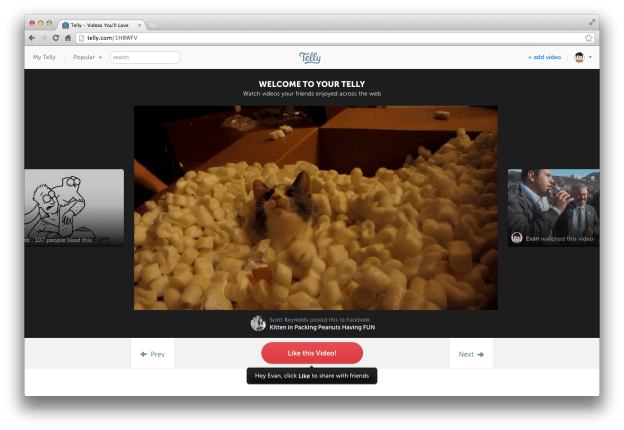
Twitter is taking to video in a big way these days, revamping its gallery feature to pair videos with still images and backing Vine, what some have argued is the next big video-sharing outlet on the Web. Facebook already wants to be the premiere destination for all shareable content. And YouTube rules the roost when it comes to online video. But it’s still so hard to find video you love in one place. That’s where Telly steps in, allowing you to watch and share video with friends across your social networks.
Telly is the net descendent of TwitVid, one of the original repositories of Twitter video. Started in 2009, the site became the largest destination for video-sharing for the then-exploding social network. Telly extends that approach by focusing on video discovery.
“Last summer, the decision was made to try to broaden the original goal [of TwitVid],” said Mike Cieri, Head of Product for Telly. “The Telly experience is built more around video discovery… improving the way people discover video online.”
Telly accomplishes this by allowing people to both upload video directly to the service, and by curating video according to what’s popular.

“It’s a Pinterest sort of model,” said Cieri. “It’s not just user-generated content. It’s more how do I take what my friends are enjoying across the Web.”
However, the social video model Telly is employing presents challenges. What you share on your desktop might not be what you’d enjoy on your smartphone. Meanwhile, some embeddable video that works on traditional computers might not work yet on mobile.
Thus, according to Telly CEO Mo Al Adham, Telly is “trying to be smart” about what is shared where in its service, staying in compliance with internet video standards like HTML5 and AVC/H.264.
In the end, Telly wants to be where people go to find videos they’re sure they’ll love. “There’s so much more video out there than what’s encompassed by YouTube,” said Cieri. Telly might be your next doorway in the addicting world of online video bingeing.
Editors' Recommendations
- How to make a GIF from a YouTube video
- Google brings back humans to take over moderating YouTube content from A.I.
- YouTube permanently bans white nationalist channel VDARE
- YouTube pulls down conspiracy theory videos linking 5G to coronavirus
- YouTube creator PewDiePie says he’s taking a break from making videos


